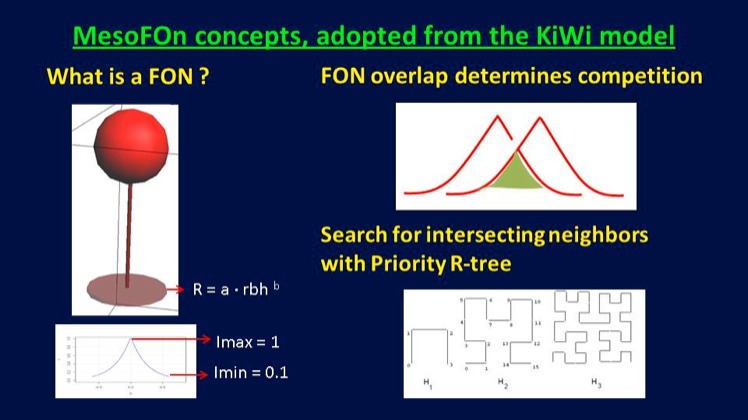FON parameters

You can enter the four FON parameters for the included species in section 4. The underlying concepts of the FON approach adopted from the KiWi model are outlined in Figure 10 and are briefly described in the following:
Basically, a field of neighborhood is of a discrete size given by its radius around the trunk of the tree it belongs to. With increasing diameter at breast height the radius of the FON rises according to the power-law r = a x dbh ^ b (compare Figure 10), with a, b representing the 2 parameters of the expansion function and dbh once again being the diameter at breast height.
The intensity field declines sexponentially - starting from an I_max inside the trunk and ending with a fraction of I_max given by the parameter I_min at the field radius. An I_max of 1 ensures that no tree can grow inside the trunk of another tree.
The competitive influence a focal tree exerts on a neighbor tree is dependent on the local intensity of the first and on the overlapping FON area.
Finding possibly overlapping fields is a repuirement of the FON approach. Since a simple search among all the thousands trees inhabiting the simulated forest stand consumes large amounts of computational time, the origianl KiWi model made usage of a Hilbert R tree routine to accomplish this at fast computational speed. For several reasons this approach has been replaced in mesoFON by the Priority R-Tree algorithm (Arge et al. 2004).











